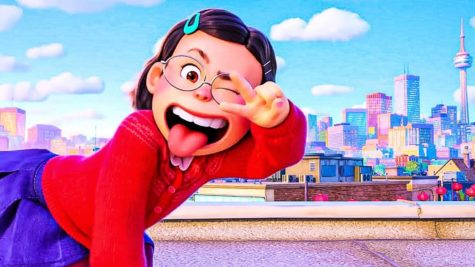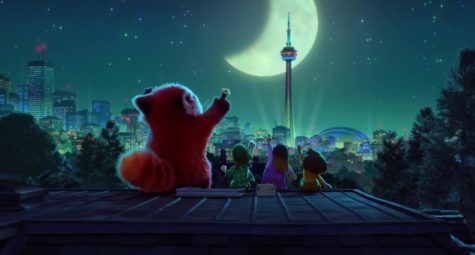Why Critics are Wrong About “Turning Red”
“Turning Red” is Disney and Pixar’s latest animated movie which was released on Disney+ on March 11, 2022.
March 23, 2022
Disney and Pixar released their latest animated film, “Turning Red,” on Disney+ Friday, March 11, 2022, and has received mixed reviews online.
While there is a lot of support for the movie, especially by hardcore fans of Disney and Pixar, the film had received a lot of backlashes even before it was officially released.

“Pixar fell off so f*****g hard ike what the fuvk even is that,” @Bolverk15 wrote on Twitter, referring to the animation style used in “Turning Red.”
Such hostile statements stem from the high expectations some fans have of Pixar. This animation studio has been known to incorporate high-definition graphics in its films significantly ahead of its time in the late 1990s and 2000s.
However, this isn’t the only reason for the unnecessary hate “Turning Red” has received.
The animated movie was criticized for being made mainly for a young female audience. In his review of the film, Sean O’Connell, CinemaBlend’s managing director, wrote that it didn’t bother “to include plot elements everyone could find engaging.” O’Connell decided to take down his review from the website and apologized for it due to public criticism. The original article can be found in the archives of CinemaBlend’s website.
The film is also controversial because it addresses “mature” themes, including menstruation, crushes, teenage rebellion, etc. Many critics have denounced the movie for being too “inappropriate” for children and disagree with the portrayed messages. One online user went as far as saying that the film goes against their “Christian values.”
“The Disney movie ‘Turning Red’ is NOT for kids…at all (especially not for families trying to keep their children close to Jesus),” Felicia Renee, a parent, wrote on Facebook. “You will find the COMPLETE opposite in this movie.”

First off, “Turning Red” has beautiful, anime-inspired animation that allows characters to be very expressive and backgrounds to stand out. It is a shame critics of the animation style do not acknowledge this. Also, I think it is remarkable that such a popular and well-respected animation studio like Pixar is experimenting with different animation styles since using the same type can get boring and predictable.
In terms of the film’s target audience, although this movie is made with primarily female tweens and teenagers in mind, there should be no issue with this fact. Yes, not everybody will be able to relate to Mei, the 13-year-old Chinese female main character, but some have been able to regardless of their identity. Some have even shared their experiences online on connecting to her.
“…I can relate to Mei so much…I TRY my best to do things to keep my family happy, my parents, do right by them but…I haven’t been right by me,” @thedrawer29 said on Twitter. “I know I’ll never be the person they want, and that’s okay…”
This is a core message of the film, and it genuinely upsets me how many people, especially parents, are missing the valid message of the movie. “Turning Red” is a movie that normalizes girls using pads and addresses the issue of “helicopter parenting,” a descriptive term Merriam-Webster defines as “a parent who is overly involved in the life of his or her child.”
Mei’s mother, Ming, portrays this as she wants Mei to be just like her when she grows up and is over-protective of Mei to the point that she’s not allowed to be who she truly is. Mei has been described as a “goody-goody” in the movie because she is obedient to her mother’s requests. As Mei grows up, she begins doing rebellious things such as sneaking out to a party and running away to attend a concert she was forbidden to go to.

Critics of the film say “Turning Red” is trying to promote rebellious behavior for teenage girls, but they ignore the underlying issue at hand. Mei had not done a single “bad” thing until she turned 13-years-old. When she does mess up, it seems like the end of the world for her mother and even for herself when she felt guilty for having a crush on a boy. This is precisely the problem with the critiques.
The movie is not condoning rebellious behavior but instead trying to teach parents not to be too hard on their children when they have disagreements or do something wrong. If parents keep trying to protect their children from the world to the point where their kids can’t grow their character, they are the ones who are responsible for pushing them away and doing the opposite of what they want them to do.
Long-story-short, it is okay for movies to be made for specific audiences. Parents should not condemn their children when they make an unwise decision or disagree with one.



